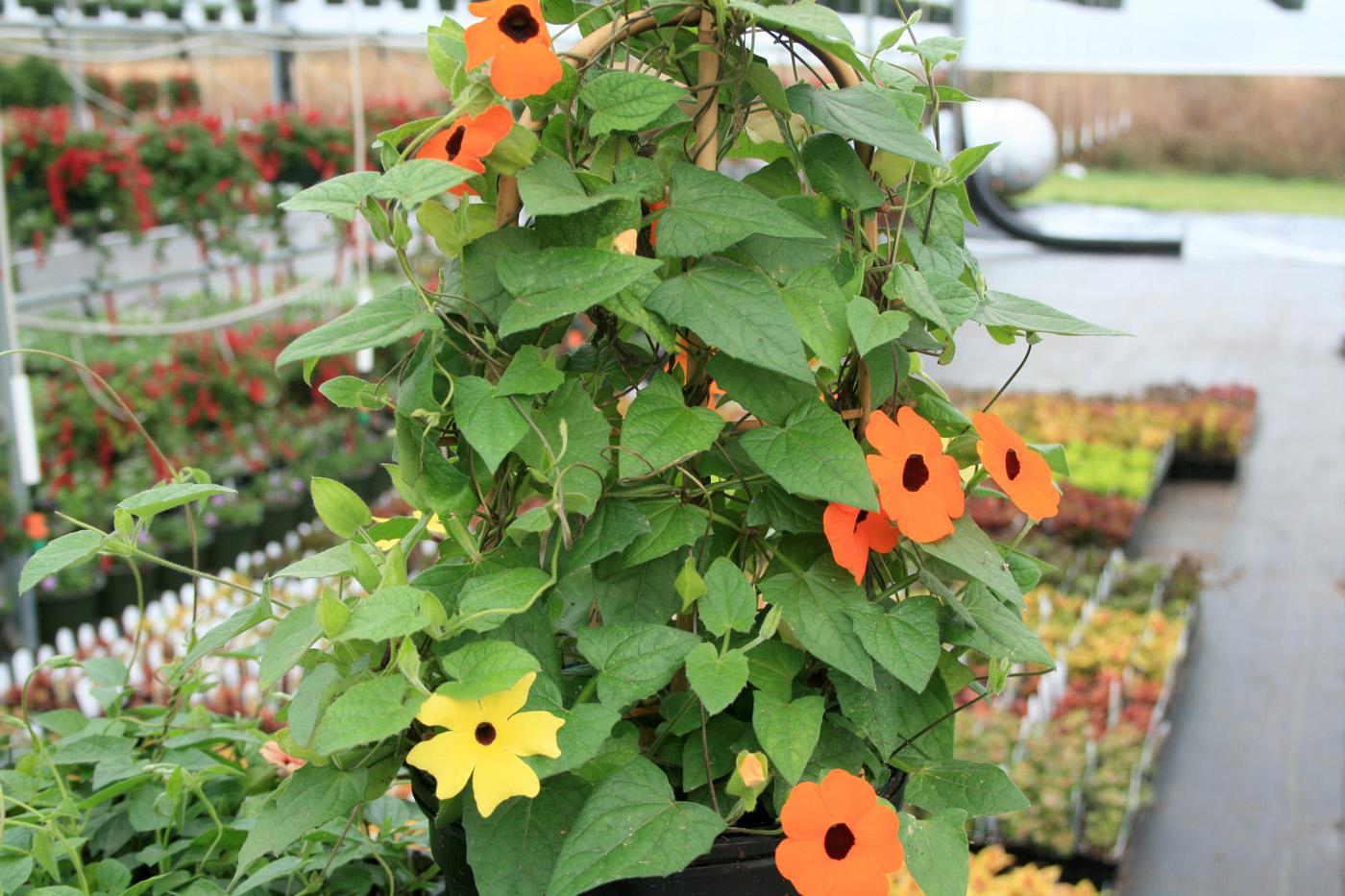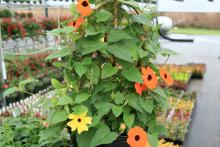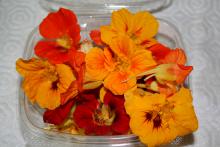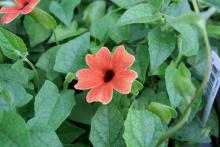Information Possibly Outdated
The information presented on this page was originally released on March 22, 2011. It may not be outdated, but please search our site for more current information. If you plan to quote or reference this information in a publication, please check with the Extension specialist or author before proceeding.
Flowering vines make great bedding annuals
Don’t forget flowering annual vines this spring when you look for bedding plants at your favorite local garden center. These plants add interest and color as they spread across fences and arbors.
Annual vines are fascinating, as they complete their entire life cycle right before your eyes. In just one season, the seeds germinate, the plants grow and flower, and they set seed for the next generation before they die. This is a lot of living packed into one short season.
Annual vines are right at home in cottage and formal gardens. They require only water, fertilizer and maybe some support from you. A couple of my favorite annual vines are Black-eyed Susan vine and nasturtium.
Black-eyed Susan vine is an annual favorite. The sunny appearance of its flowers is sure to please. While technically it is a climbing vine, black-eyed Susan is really more of a leaner. The stems can reach up to 10 feet tall, so be ready to encourage it with ties or clips to stay on its trellis, or it may become an unusual ground cover.
It prefers the cooler temperatures of spring, so start seeds indoors eight weeks before the last frost. Because it’s too late this year to start seeds, buy your plants at the garden center. Keep the soil consistently moist and feed at planting with a slow-release garden fertilizer.
The primary flower colors are orange, yellow, and white, and each has a dark center. An interesting new selection available this year is African Sunset. These flowers have a dark burgundy eye. As the flowers age, they change color, imitating the warm colors of sunset.
Nasturtiums are certainly not shy. With warm flowers colors of yellow, red, and orange, they shout out for attention when planted in the full sun. Flowers are held on long stems and seem to float above the dark green foliage. Be sure to select a climbing variety; many landscape selections have a mounding growth habit better suited for containers.
Climbing varieties can reach out more than six feet tall. Nasturtium thrives in less-than-perfect soil, as long it drains and does not have standing water. If you have a poor, gravelly soil, nasturtiums would be a good choice.
Keep nasturtiums dense by pruning the vining stem tips. Pinching the faded flowers promotes more flowers, but since the flowers are edible, there shouldn’t be any faded blooms to pinch. The foliage also is edible and gives fresh salad a peppery kick.
One of annual vines’ best features is that they quickly cover an area with nice foliage and beautiful flowers. And because they are annuals, you can change color schemes every year.










